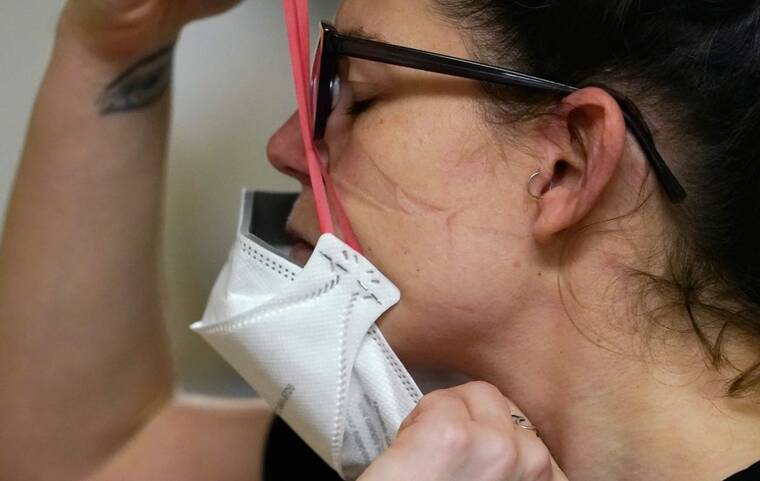Due to the emergence of new COVID variants, the prevalence of reinfections, and the rise in cases in certain areas, some schools and businesses are reintroducing mask requirements as a precautionary measure. It is recommended by experts to increase precautions, including the use of masks, as COVID continues to circulate.
According to Andrew Pekosz, a professor of molecular microbiology and immunology at the Johns Hopkins University Bloomberg School of Public Health, it is advisable to carry a mask in your car and have a few masks at home or work to ensure that you have one available whenever needed.
To understand when and where to wear a mask, here are some important guidelines:
1. WHEN SHOULD YOU WEAR A MASK INSIDE?
Dr. William Schaffner, an infectious disease specialist at the Vanderbilt University School of Medicine, recommends wearing a mask indoors in confined, crowded spaces, especially if you are 65 or older, have an underlying condition that makes you more vulnerable, or are pregnant. This includes places like stores, offices, and public transportation. The risk of infection increases with proximity to others within three to five feet, and spending extended periods of time in indoor settings.
2. WHEN SHOULD YOU WEAR A MASK OUTSIDE?
While outdoor transmission is generally rare, masks can still be beneficial in scenarios where people are tightly packed together and there is increased vocalization, such as at sporting events or concerts. The general rule is to wear a mask when you are in close contact, elbow-to-elbow, with others.
3. WHICH TYPE OF MASK SHOULD YOU WEAR?
According to Linsey Marr, an expert in the airborne transmission of viruses at Virginia Tech, N95, KN95, or KF94 masks are highly recommended as they filter out over 90 percent of virus particles, making them more effective than surgical or cloth masks. The Centers for Disease Control and Prevention also provides resources to find free N95 masks. It is important to wear the mask properly, ensuring it fits snugly across your face and covers both your nose and mouth.
4. DO YOU NEED TO MASK AFTER BEING EXPOSED?
If you have been in close contact with someone who tested positive for COVID, the CDC advises wearing a high-quality mask for 10 days around other people, even if you test negative. Symptoms may take time to develop, and testing too early can result in false negatives.
5. IS ONE-WAY MASKING EFFECTIVE?
Even if you are the only person wearing a mask, it can significantly reduce your risk of infection by blocking particles around you. Additionally, practicing proper hand hygiene, maintaining social distance, and receiving booster shots when available can further enhance your defenses against the virus.
Dr. Yvonne Maldonado, a professor of global health and infectious diseases at Stanford Medicine, emphasizes the importance of masks in reducing risk, stating that they undeniably work. While the pandemic has been exhausting, it is essential to remember that we have tools to protect ourselves.
Denial of responsibility! VigourTimes is an automatic aggregator of Global media. In each content, the hyperlink to the primary source is specified. All trademarks belong to their rightful owners, and all materials to their authors. For any complaint, please reach us at – [email protected]. We will take necessary action within 24 hours.


